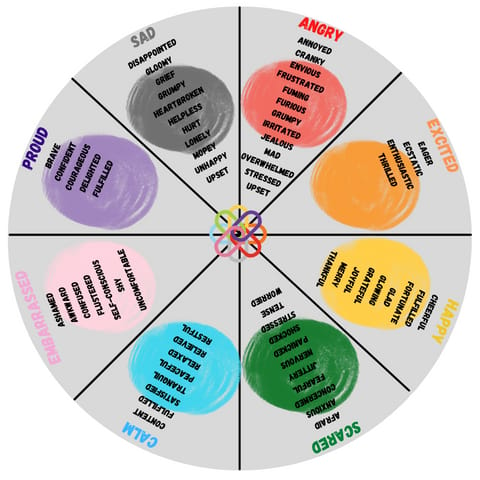- The Weekly Compass
- Posts
- Emotional Wellness:
Emotional Wellness:
Understanding Your Emotions and Being Your Authentic Self
Emotional Wellness: Understand Your Emotions and Being Your Authentic Self
So far in this journey of wellness discovery together, we have talked about physical wellness and mental wellness- making sure our bodies and our minds are well. Focusing on small habits or daily things that you and or your children can do to improve how you feel and are in those areas of your life.
Next we are going to dive into emotional wellness which encompasses emotional awareness, stopping comparison between ourselves and others, and being authentically ourselves. This topic is going to be split into three weeks because there is so much content to dive into.
Emotional awareness is understanding and recognizing emotions in ourselves and in others. This is not an easy skill! Often times when we think we have it right we don’t! Brene Brown in her book “Dare to Lead” mentions that “understanding emotions in others and communicating our understanding of these emotions require us to be in touch with our own feelings. Ideally, it also means that we aren’t fluent in the language of feelings or at very least, conversational and somewhat comfortable is the world of emotions.“ First we have to understand our emotions to then be able to process through them and understand them in others. Emotional development begins early on in a child’s life and continues throughout their lifespan. Children first rely on their adult caregivers to help them learn to regulate their emotions. Then children rely on the adults in their lives to understand and name emotions and learn healthy ways of sharing those emotions.
First before we can be of any support to others or be well with our own selves, is to understand our own emotions. We as a society often limit our emotional reactions to sadness and anger, but there are so many more emotions we can and should express. Emotions in and of themselves are not good or bad they just are. It is how we express them that often brings in those connotations. How many times has a situation happened and you are quickly able to identify what emotional response you are having?
Let’s walk through one scenario from my personal life and think about all of the potential emotional “consequences” that were felt and understood. My husband Kevin, is now a first year emergency medicine resident at The Ohio State University Medical Center. Last year March was when we received the news that we were moving from our home of 20 years to a whole new part of the country. On match day, we were in a stadium filled with hundreds of people including his classmates, friends, family, and the community. All together each of the 60 medical students received a custom football that shared where they would spend the next few years of their lives training to be doctors. I was the first to see the name “Ohio State University” on his football and knew my husband matched at his number one program. It took my husband a little longer to process this information and understand the consequences of what just happened. Throughout the rest of that day and that weekend we celebrated that my husband was going to learn at his dream program and our lives would be forever different. Now, if you were in my shoes, what emotions would have come out to you as a part of this event? Probably a mix of good and not so good right? Good emotions like joy, excitement, pride because of what my husband accomplished and what it meant for our future, but also some more traditionally negative emotions such as fear for the unknown, sadness for leaving my friends and family, and a little stress about all of the next steps. Part of emotional awareness process is to first name the emotion, understand the response that it is bringing to our mind and body, and process it in a healthy way.
We must first understand and process our own emotions in a healthy manner before we can expect to help our children and those around us to do so. Help name and model healthy emotional understanding and regulation for children. Let them know it is okay and healthy to feel emotions. Emotions are not good or bad they are a part of the human experience. It is how we respond to them that makes them good or bad. Show children that we are a safe place to share their emotions and feelings with. Help children to start learning to name emotions. Using tools like an emotion wheel are great tools to help children start learning about emotions, this concept can still be used as children age too. It all starts with us as adults before we can expect healthy emotional understanding from those around us. How can you create safe spaces for those around you to feel and express their emotions?

This is the first week of three where we dive into all things emotional wellness. Next week we will dive into removing comparisons from our mindset to be emotionally better.
What is resonating with you from this week’s content? How are you going to work to understand your emotions better and help those around you to do the same?
